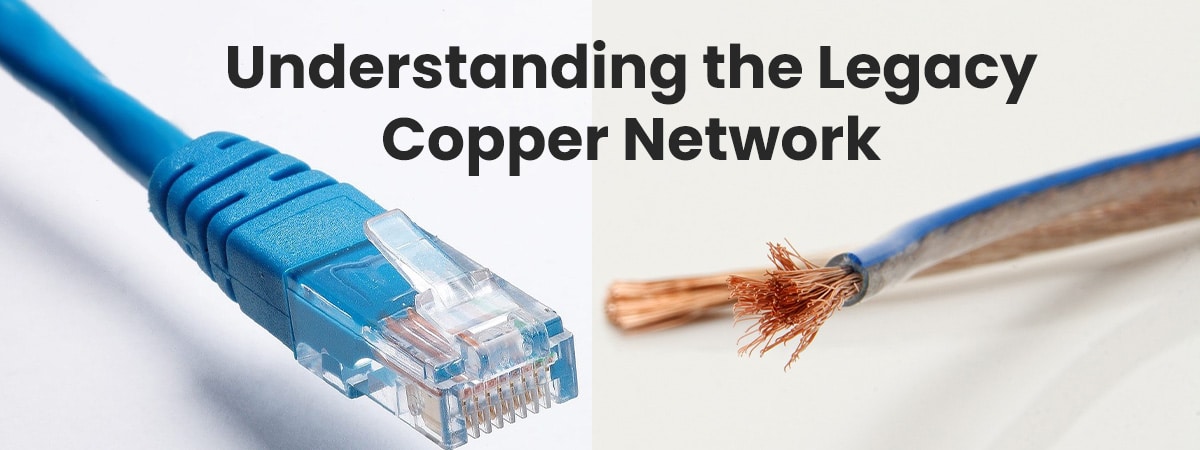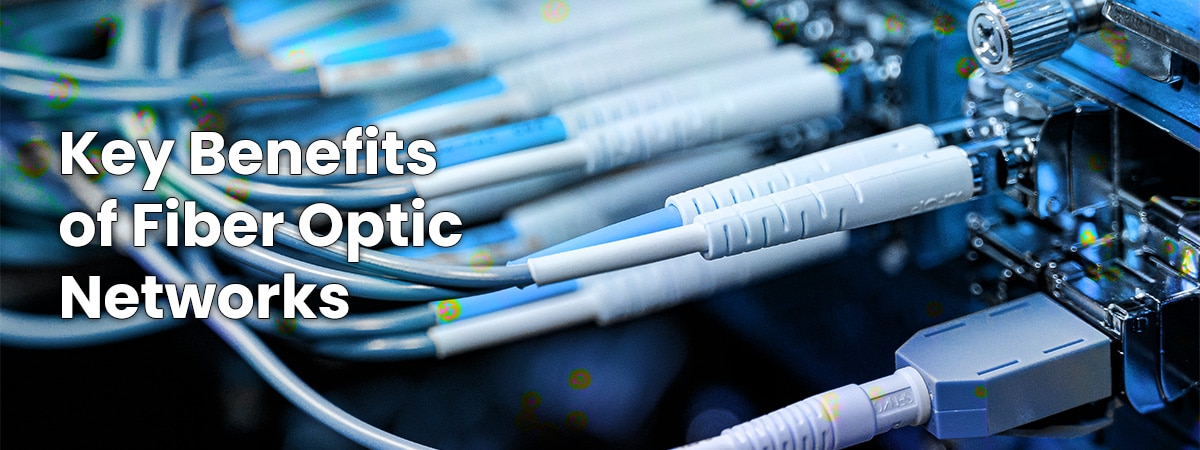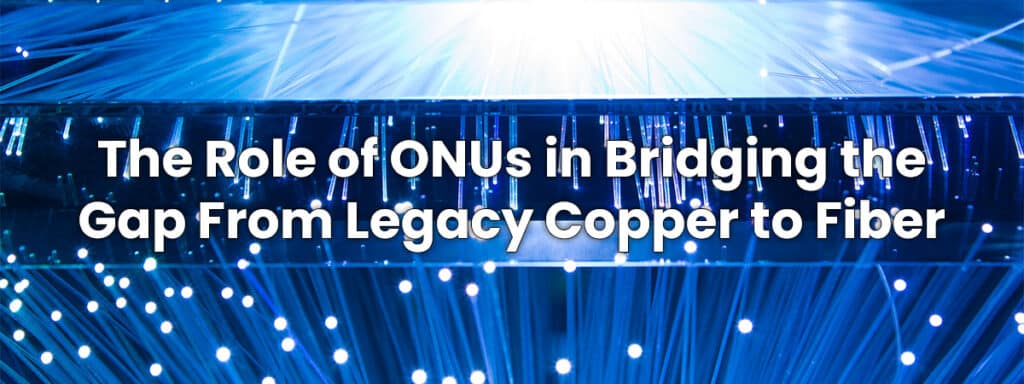In today’s fast-paced digital age, network infrastructure is the backbone of communication and connectivity. The need for high-speed, reliable, and future-proof networks has never been more apparent. One of the crucial steps in this journey involves transitioning from legacy copper networks to state-of-the-art fiber optic networks. This transition is where Optical Network Units (ONUs) come into play, acting as essential facilitators in the migration process.
Understanding the Legacy Copper Network

Legacy copper networks, often referred to as copper-based networks, have served us well for many decades. However, they come with inherent limitations that are increasingly challenging to overcome in today’s data-hungry world. These networks use copper cables to transmit data, which is susceptible to signal degradation over distances, resulting in slower speeds and bandwidth constraints.
The copper infrastructure that served us well for voice communication and early data transfer is no longer sufficient to meet the demands of modern applications. With the advent of high-definition streaming, online gaming, cloud computing, and the Internet of Things (IoT), copper networks fall short in providing the speed, reliability, and bandwidth needed.
Introduction to Optical Network Units (ONUs)
ONUs are a critical component in the journey from copper to fiber optic networks. They play a pivotal role in connecting end-users and customer premises equipment (CPE) to the high-speed, future-proof fiber optic network. ONUs are devices that bridge the gap between the legacy copper-based CPE and the advanced fiber optic infrastructure.
Key Benefits of Fiber Optic Networks

Fiber optic networks are the future of high-speed data transmission, offering several key advantages over copper networks:
- Higher Speeds: Fiber optics can transmit data at the speed of light, allowing for faster and more consistent speeds.
- Lower Latency: Reduced signal travel time results in lower latency, critical for applications like online gaming and video conferencing.
- Better Reliability: Fiber is resistant to electromagnetic interference and signal degradation, ensuring consistent network performance.
- Greater Bandwidth: Fiber optic networks can handle large data loads, making them suitable for the increasing demands of data-intensive applications and services.
- Support for Emerging Technologies: Fiber networks are better equipped to handle emerging technologies like 5G and IoT, which require high-speed and low-latency connectivity.
ONU Features and Functions

ONUs are designed to accommodate the coexistence of legacy copper-based CPE and new fiber optic networks. They convert optical signals from the fiber optic infrastructure into electrical signals that can be used by the CPE. This conversion process ensures that existing equipment can seamlessly connect to the advanced fiber optic network without the need for costly hardware replacements.
The Migration Process
The migration process from copper to fiber involves several key steps, where ONUs play a critical role:
- Assessment and Planning: The first step involves assessing the existing infrastructure and planning the migration process. This includes evaluating the compatibility of legacy CPE with the new fiber optic network.
- Installation of ONUs: ONUs are installed at the customer premises to act as intermediaries between the fiber optic network and the legacy CPE. This allows for a smooth transition and ensures that the existing equipment can continue to operate without disruption.
- Testing and Verification: After installation, rigorous testing is carried out to ensure that data can flow seamlessly from the fiber optic network to the CPE through the ONUs.
- Customer Education: To make the transition as smooth as possible, customers are educated about the benefits of the new network and how ONUs are integral to this process.
- Ongoing Support: ONUs continue to play a crucial role in maintaining the connection between the legacy CPE and the fiber optic network. This support ensures a stable and reliable network for end-users.
Case Studies and Success Stories
Real-world examples of businesses and communities that have successfully migrated from copper to fiber using ONUs abound. These success stories highlight the transformative impact of such migrations. Organizations report significantly improved network performance, reduced downtime, and increased productivity.
Future-Proofing Your Network
Transitioning to a fiber optic network with the assistance of ONUs is a future-proof solution. As technology continues to advance and data demands increase, fiber optic networks can adapt and scale to meet these requirements. This adaptability leads to long-term benefits and potential cost savings.
In conclusion, ONUs are instrumental in facilitating the migration from legacy copper networks to future-proof fiber optic networks. They bridge the gap between old and new, ensuring that existing customer premises equipment can seamlessly transition to high-speed, reliable, and future-ready connectivity. By understanding the role ONUs play in this process, businesses and individuals can make informed decisions and embrace the advantages of fiber optic networks.
Call to Action
If you are considering the transition to a fiber optic network or have questions about the role of ONUs, feel free to get in touch with us. Our team is ready to assist you in making the leap to a faster, more reliable, and future-proof network infrastructure. Explore our range of ONUs and other solutions to take your network to the next level.

